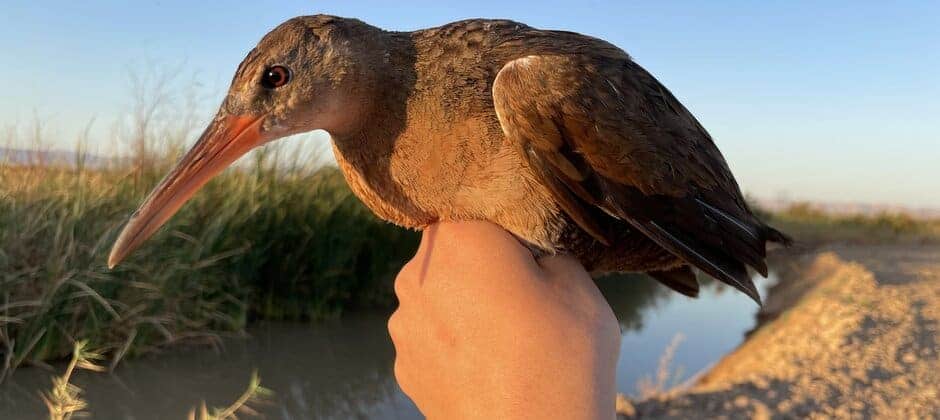Share this article
TWS2022: Does selenium affect Yuma Ridgway’s rails?
In 1986, the Kesterson Reservoir in central California was closed due to selenium toxicity. Young waterbirds and fish had developed deformed wings, beaks, and eyes. The reservoir was protected within the San Luis National Wildlife Refuge, but received the downstream water drainage from surrounding agricultural lands.
Selenium occurs naturally in the soil, and many organisms—humans included—need selenium to survive. But the constant tilling of soil in agricultural areas, as well as other activities like mining, can churn up enough selenium that levels become toxic when they are washed downstream in places like Kesterson, which has no natural outlet other than evaporation.
The selenium here accumulated as a result, building up in fish and invertebrates, as well as the waterbirds that wade in the water and prey on the former.
TWS member Cydney Yost, a master’s student in natural resources and her supervisor Courtney Conway at the U.S. Geological Survey’s Idaho Cooperative Research Unit wanted to see whether the Yuma Ridgway’s rail (Rallus obsoletus yumanensis), a federally endangered species, was impacted by selenium in the Sonny Bono Salton Sea National Wildlife Refuge in California. Similar to Kesterson, water from irrigated agricultural fields drain into this area with no natural outlet other than evaporation.

University of Idaho researchers Cydney Yost (right) and Lainey Bee (left) attach a GPS transmitter to an adult Yuma Ridgway’s rail. Credit: Cydney Yost
In ongoing research Yost presented at The Wildlife Society’s 2022 Annual Conference in Spokane, the researchers are currently testing the water in marshes within and adjacent to the refuge, as well as vegetation samples, sediment, crayfish and mosquitofish (Gambusia spp.)—both common prey items for Yuma Ridgway’s rails.
They used carpet traps to ensnare rails, then attached GPS transmitters to the birds to help find their nests. After chicks fledged, the researchers collected remnant feathers, eggshell fragments and any unhatched eggs for analysis. They also took blood samples from the rails.

A pair of Yuma Ridgway’s rails. The male on the bottom is fitted with a GPS tracking device. Credit: Cydney Yost
The blood samples have so far revealed that selenium levels are higher in Yuma Ridgway’s rails found in marshes fed by waterways with irrigation runoff, compared to those in marshes that don’t receive irrigation runoff. But levels are still far below those found in waterbirds in Kesterson, where some birds were producing no viable offspring in the 1980s.
Yost still has plenty of samples to analyze in the ongoing research, but some results are emerging. While they haven’t yet seen levels as high as Kesterson, 80% of crayfish sampled are above a known selenium toxicity level for fish. The mosquitofish are also mostly above the threshold for selenium toxicity in fish in the marshes that receive irrigation runoff.

A Yuma Ridgway’s rail hides in cattails. Credit: Asch McDonnel
So far, the researchers have found 15 whole unhatched eggs left behind in rail nests. They determined that many of these eggs didn’t hatch because of bad positioning of the embryo—some eggs are naturally unviable. They are still waiting for results on the quantity of selenium in these eggs to determine whether the element may have played a role in their fate.
Yost is planning an upcoming field season as well as ongoing analysis of samples the team has already collected. She said the analysis is important because selenium toxicity is still not properly understood when compared to other issues like mercury accumulation.
“[Yuma Ridgway’s rails] are an indicator species for wetland habitat quality, so understanding how selenium affects them will tell us more about all species that rely on these wetlands,” Yost said.
Header Image: A Yuma Ridgway’s rail captured in the Salton Sea as part of a research project on selenium. Credit: Cydney Yost








